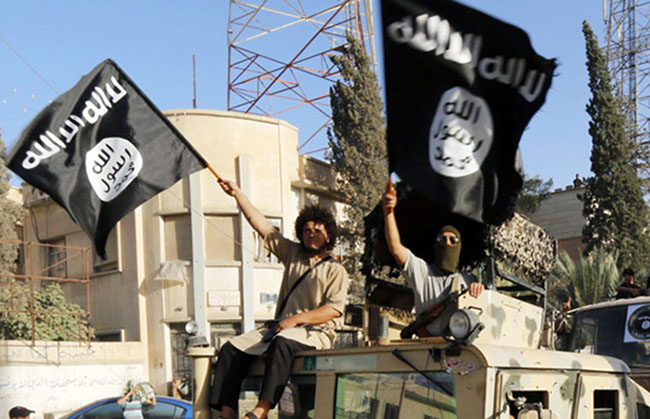Following the deadly attacks in Pakistan, on February 16, which killed and wounded more than two hundred people, the self-proclaimed Islamic State of Iraq and the Levant (ISIL) carried out an attack of the same nature on Sardar Daud Khan Hospital in Kabul, on March 8, which killed and wounded more than 100 individuals, including doctors. The ISIL group claimed responsibility for both the incidents. Afghan nation left deadly year behind and loyalists to ISIL were involved in sporadic attacks and sectarian violence across the country. Although this group is losing ground in Syria and Iraq, it intends to strengthen its basis around Afghan-Pak border.
The ISIL group, which practices upon radical ideology, is believed to seek foothold in tribal belts where locals tend to accommodate them for two main reasons: first: since the residents of the tribal areas have grown up with tribal traditions, which are mostly against the law, they are inclined in violating law and might embrace radicalism especially when being tempted or threatened. Secondly, there is already a gap between tribal areas and the central government and tribal councils are likely to play more crucial role than the state. For instance, many cases regarding women are decided by tribal leaders and enforced in desert court rather than going to legal court. Of late, it has been reported that the Taliban outfits stoned a woman to death and flagellated a man in desert court in Warduj district of Badakhshan province. So, it is not only the ISIL but many warring outfits are more active in tribal areas.
These attacks indicate that the group has an operational presence in Kabul that is beyond the “nascent” stage. The group seems to have gained the capability of carrying out fatal attacks on an occasional basis in the capital, although not at a sophisticated level yet. Sending two bombers to blow themselves up in a crowd of civilian demonstrators, or two attackers dressed as police and equipped with hand grenades and guns, plus suicide belts, into a mourning crowd, attacking hospitals with doctor’s uniform, or carrying out an attack on foreign security contractors in a minibus do not require a high level of complexity. However, the execution of such attacks does need some level of confidence and precision of planning, as well as adequate logistics and surveillance. These attacks are also an indicator that the group has recruited a certain number of dedicated and experienced fighters in the capital.
The ISIL also sought to stoke sectarian violence across Afghanistan through killing the ethnic minority groups, including women and children. In recent decades, compared to most conflicts in the Muslim world, Afghanistan has stood out for the absence of such fratricide. ISIL, during the short period since its emergence, has, however, showed no hesitation in stepping into this un-mined area. While the Ashura and July 2016 attacks in Kabul are the most remarkable examples of sectarian violence by ISIL, the overall sectarian trend that is emerging since the group’s advent has been much wider.
The ISIL’s attack in southern Sindh province led to high tension between Kabul and Islamabad as Pakistani officials lashed out at Afghanistan. In other words, Pakistan’s knee-jerk reaction resulted in the closure of Afghan-Pak border and Pakistan’s mistreatment with Afghan emigrants. Similarly, Pakistan fired missile in Nangarhar province which was a flagrant violation of territorial integrity. With the Wednesday’s attack in Kabul, some political pundits believe that putting pressure on the emigrants will not tackle the issue and state that Pakistan must take serious actions against the militants.
Since the ISIL has gained foothold in Pakistan soil, Pakistani officials accepted earlier the facts that a network of “facilitators” paved the way for the militants. A number of the Taliban fighters pledged allegiance to ISIL group following the death of Mullah Omar – which led to splinter group – and played as catalyst for the emergence of this group both in Pakistan and Afghanistan. Indeed, both Pakistani and Afghan nations suffer from mounting insurgency and religious minority groups have sustained heavy casualties inside and outside the border. In a nutshell, the two countries are embroiled in violence and bloodshed.
Up to now, warring factions played its role successfully in creating gap between the two countries. Perhaps, it is one of the fighters’ projects to engender tension between Kabul and Islamabad to that they will not agree to join forces in eradicating their sanctuaries. It should be noted that many seminaries are changed into hotbed of terror and there are also some seminaries in Afghanistan which spread radical mindsets. Both the countries will have to check the text books cautiously and register all the seminaries.
It is believed that “a tooth for a tooth and an eye for an eye” will be the only effective option, if not the best, regarding all warring factions, mainly the ISIL group. The government should revenge streams of blood being spilt every day which fill our nation with outpouring of grief. Moreover, Pakistan should also launch a strong military action against all warring factions. The only way for mitigating militancy is nothing other than joining forces against the militant fighters. It is hoped that the two countries tackle the mistrust in a diplomatic way and adopt effective strategy in eradicating terrorism.

